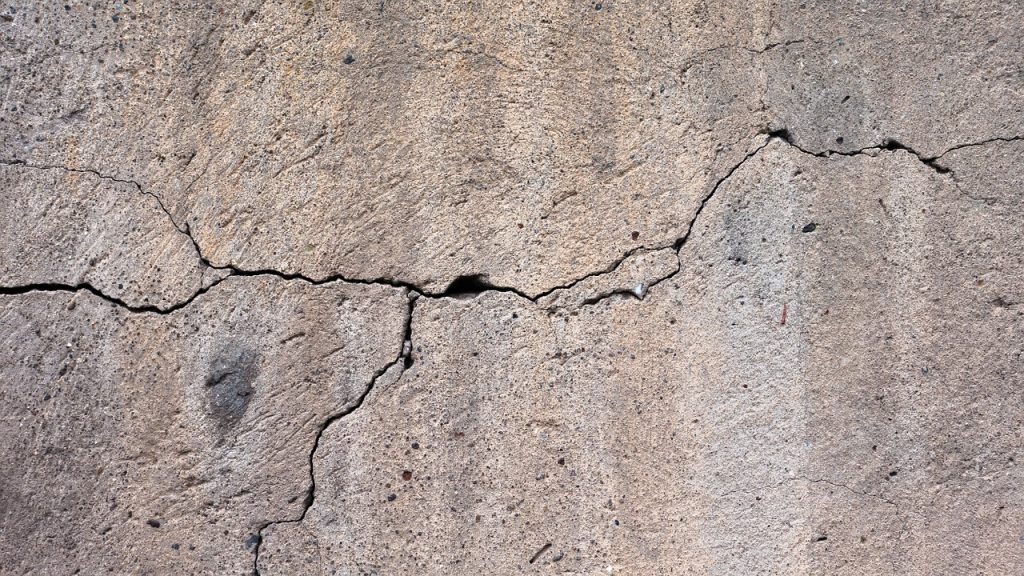Concrete Staining: A Fully Comprehensive Guide
Concrete staining is a type of flooring, which adds character to any area its implemented in, as it can completely transform the look of a dull, concrete floor. A concrete stain adds colour to the floor, as well as producing a beautiful opaque effect.

When treating concrete floors and walls with the same method, it’s important to keep in mind that the result will differ slightly from area to area, due to a combination of factors such as:
- Composition of concrete
- Age of concrete
- Surface porosity
- Texture of concrete
- Environmental conditions
Its distinctive look is often described as ‘vintage’ or ‘unique’ by manufacturers, so if you’re looking for something that will give your home individuality, stained concrete may be just what you’re looking for!
What is Concrete Staining?
Concrete staining is a water-based product that you pour onto the surface of washed concrete and become a permanent part of the surface. The stain can differ in colour and will fade over time, but using a sealer will help prevent this.
There are two types of concrete staining – reactive and non-reactive staining. Both can be applied to new or old concrete, and can revitalise even the most dull-looking concrete. For reactive staining, you must use a water-based acidic solution which will contain metallic salts that will react with the concretes lime content.
A non-reactive concrete stain is a water-based acrylic solution which does not rely on any chemical reaction to occur to cause a shift in colour. The non-reactive stain is formulated to penetrate the surface and accumulate in the open pores of the concrete.
The water-based acrylic stains have a wider range of colours and the solution is easier to apply, however they do not produce the same varied, translucent colour tones that the acid stain does.
How to Stain Concrete
Concrete flooring that has been poured within the last 10 years has most likely been smoothed over mechanically, creating a nice flat surface, which may make it too difficult to acid stain. You can treat a surface older than 10 years old, but it must be washed and essentially immaculate before any treatment is applied.
We highly recommend hiring an experienced professional to seal your floor, as the solution is permanent – meaning there is no changing any mistakes made once the solution is poured. Here, we will take a look at the process of staining a concreted area, as well as providing tips on how to get the perfect finish.
- Part one:
First things first, ensure the concrete is thoroughly cleaned before any staining takes place. This will usually be done with a degreaser, to ensure all dirt and oils are lifted from the surface, as it will hinder the staining process. We recommend applying this, then using either a stiff straw brush, or a floor buffing machine (this will do the job quicker and easier). After you’ve removed all dirt and most likely cleaned the surface area twice, rinse thoroughly with clean water and wait for it to dry.
- Part two:
We recommend testing a small area of concrete to ensure you will receive the result you want. We especially advise this step for those staining old concrete. This is for three reasons: to ensure the concrete is properly cleaned, that the concrete will react properly, and that you like the colour.
- Part Three:
Pour the staining solution onto the surface, altering the amount you use in line with the coverage you want. Once this has dried completely, seal the surface with a water-based sealer. It is important to seal the flooring from north to south (in a thin and even fashion), then once it’s dried, reseal by painting from west to east. This completely ensures all pores are filled with the sealant.
There are two different kinds of acid stain that differ to give different results and colours. It is important to understand which one does what, so you can pick the acid stain you will prefer. Here we will look at the pros and cons of each staining solution:
Acid Stain Concrete
Acid Staining is usually limited to eight colours, and is the most long-lasting solution out of the two. As previously highlighted, you won’t be able to predict the final outcome, as the acid will react differently to each section of the concrete. Here, we will examine the pros and cons of acid stain concrete:
Pros
- Incredibly durable
- Inexpensive
- Stain can be used outdoors and indoors
- A classic look that doesn’t age quickly
Cons
- Requires ongoing maintenance
- Limited colour options
- Unpredictable colour when sealed
- Toxic solution, requires the utmost care when handling
If you’re looking for a uniqure, easy-to-clean flooring indoors or outdoors, then acid stained concrete might be just what you’ve been searching for.
Water-based Concrete Stain
A non-reactive solution that can only be used when the concrete pores are open. The process may end up being more expensive, as prep work is a must to ensure you get a pleasing result. You will be able to choose from a wide range of colours, which adds to the fondness of the water-based stain. Here are a few points you may want to take into consideration before you decide on what concrete stain you want in your home:
Pros
- Non-toxic solution
- Easier to dilute or build up colour
- More colour options than acid stain
- Less residue to clean up after sealing
Cons
- Not as durable as the acid stain in exterior settings
- More expensive
- Will have a more uniformed look than the acid stain
- Have to be careful not to over apply
Although water-based staining may not offer the same depth of colour the acid staining method does, it all boils down to personal preference. Choosing which stain to go for will completely depend on what you’re looking for in new flooring as each stain doesn’t differ massively in its performance.
Benefits of Concrete Staining
There are many unknown benefits to concrete staining, which may mean this method of sealing may be exactly what you’re looking for in your home or for your patio. Concrete sealing increased longevity and enhanced the character of a room, but it also has many more benefits, including:
- Fire resistance
This may be more useful for those looking to refloor an office or industrial building, as it could be a lifesaver in many situations. Building sites and factories often use a lot of flammable materials and spark-producing machinery, so a treated concrete floor will ensure no fires break out from these flammable conditions that are often created. - Durability
Although robust, concrete without treatment is susceptible to damage like cracks, scratches, and buckling. By leaving your concrete vulnerable to this type of damage, it will cost you more in the long run to maintain the flooring at an acceptable condition. A concrete floor that has been acid stained will be harder to damage and will protect against mould and mildew growth on the surface. - Energy efficient
Concrete is characteristically a cold flooring material, as it was insulate a room quite effectively. However, staining the surface makes the concrete more energy efficient than carpets and wood flooring, thereby reducing the dependency on central heating and air conditioning appliances. - Low maintenance
Concrete staining is often preferred due to its high resistance to damage, from scratches to cavities in the surface. The surface is also incredibly easy to clean, as its smooth, waterproof surface allows you to simply mop or brush any dirt away. Carpets have to be hoovered, and hardwood has to be cleaned with a special solution, whereas concrete staining can be cleaned with any cleaner you desire.
Aesthetically pleasing
Concrete may be practical, but it is not as aesthetically pleasing as other flooring, like hardwood. But by using one of the staining methods, you can completely transform the look of your patio, driveway, or living room. The range of colours allow you to completely customise the chosen area, and can make a stunning feature of an otherwise plain looking room. You can even get staining to mimic stone-based flooring, to give you the effect of granite, cobblestones, and polished marble – just to name a few!
Neil Sullivan & Sons only supply the highest quality concrete solutions and complete any task with first-class customer service. No job is too big or too small for us – we’re always keen to overcome new obstacles to help you achieve your dream patio or driveway. For more information on our services, or a quote, please don’t hesitate to contact our friendly team today!



